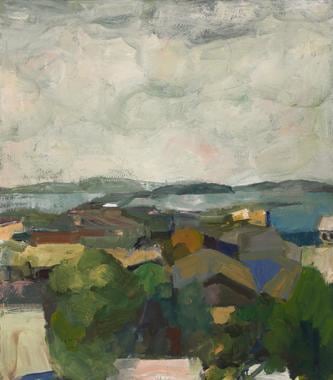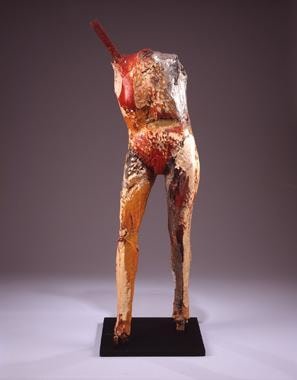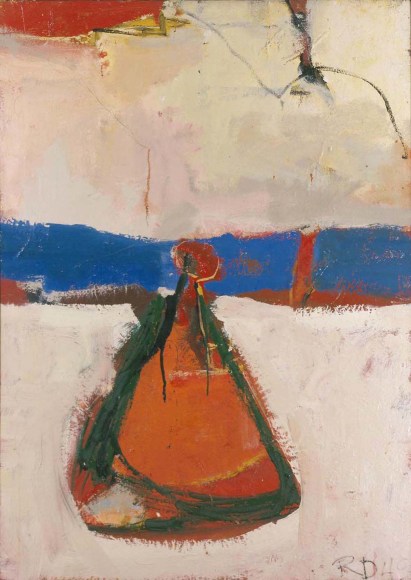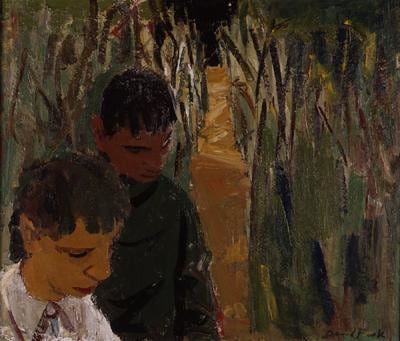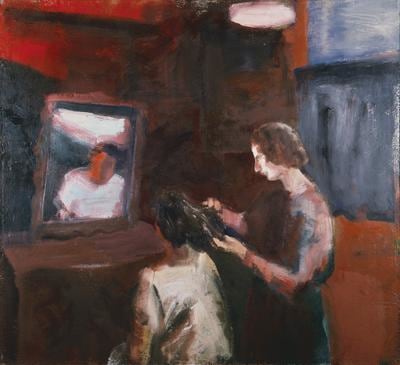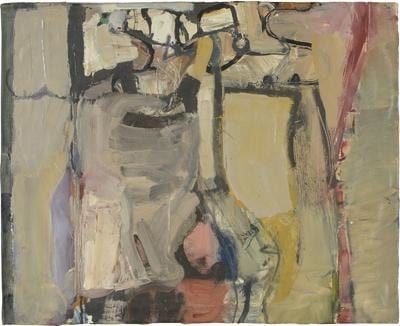Abstract and Figurative
Highlights of Bay Area Painting
January 8 – February 28, 2009
John Berggruen Gallery is pleased to present Abstract and Figurative: Highlights of Bay Area Painting, a survey of historical works celebrating the iconic art of the Bay Area Figurative movement. The exhibition will occupy two floors of gallery space and will include work by artists Elmer Bischoff, Theophilus Brown, Richard Diebenkorn, Manuel Neri, Nathan Oliveira, David Park, Wayne Thiebaud, James Weeks, and Paul Wonner. Abstract and Figurative is accompanied by an illustrated catalogue with an introduction by art historian and Director of the Palm Springs Art Museum and former Associate Director and Chief Curator of the Fine Arts Museums of San Francisco, Steven A. Nash. Many of the works included in Abstract and Figurative are on loan from museums and private collections and have rarely been exhibited to the public. John Berggruen Gallery is proud to have this opportunity to bring these paintings together in commemoration of the creative accomplishments of such distinguished artists. Please join us for our opening reception on Thursday, January 8, 2009 between 5:30–7:30 pm.
Nash writes, "There is no more fabled chapter in the history of California Art than the audacious stand made by Bay Area Figurative painters against Abstract Expressionism in the 1950s." This regionalized movement away from the canon of the New York School (as championed by artists Jackson Pollock and Willem de Kooning, and critic Clement Greenberg, among others) finds its roots in 1949, when a young painter by the name of David Park "gathered up all his abstract-expressionist canvases and, in an act that has gone down in local legend, drove to the Berkeley city dump and destroyed them."[1] Disillusioned with the strict non-representational tenets of a movement that promoted the Greenbergian notion of "purity" in art towards a perpetually evolving abstraction, Park submitted Kids on Bikes (1950), a small figurative painting, to a 1951 competitive exhibition and won. Shocking as this was to the artistic community in the Bay Area at the time – Park was then considered to be one of San Francisco's most respected Abstract Expressionists – his desire to stop making "paintings" in favor of making "pictures" gained momentum and popularity, and by the mid 1950s had translated itself (even if somewhat reluctantly) into the movement now known as Bay Area Figurative.
In her seminal catalogue, Bay Area Figurative Art: 1950-1965, Caroline A. Jones observes "The new figurative 'pictures' created by the Bay Area artists were neither reactionary nor merely illustrational. Although clearly moving away from the subjective isolation and grandiosity of Abstract Expressionism, the new work was equally in its debt. Their mature post-abstract figurative paintings preserved a sophisticated dialogue between abstraction and representation– the image oscillating between a recognizable subject and a boldly colored, abstract arrangement of thick slabs on paint."[2] It is this complex relationship between abstraction and figuration, how each particular artist responded to these contending sensibilities, and the aesthetic relationships between these artists that this exhibition wishes to explore. As Nash writes, "We are drawn now into more of an appreciation of the expressive individuality of their work and the distinctions between their respective approaches to the figure."
1 Gomez, Edward M. "The San Francisco Rebellion" Time Magazine, February 5, 1990. 2 Jones, Caroline A. 1990. Bay Area Figurative Art 1950-1965, San Francisco:San Francisco Museum of Modern Art.




